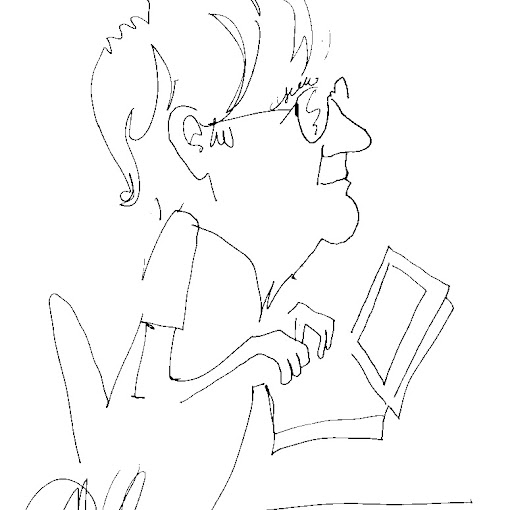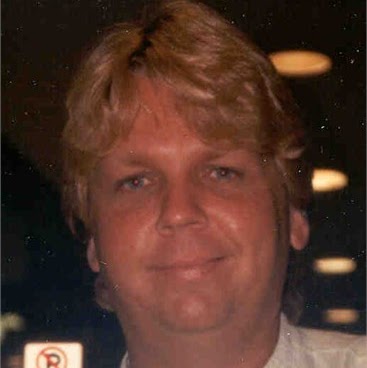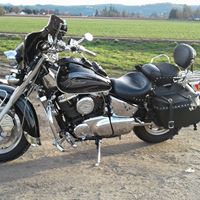Richard A Herr
age ~65
from Eden Prairie, MN
- Also known as:
-
- Richard E Herr
- Richard R Herr
- Rick E Herr
- Dick E Herr
- Robert Herr
- Linder Kuehn
Richard Herr Phones & Addresses
- Eden Prairie, MN s
- 20993 53Rd St NW, Sunburg, MN 56289 • 3203544674
- Chanhassen, MN
- Minneapolis, MN
- Lancaster, PA
Specialities
Probate • Real Estate • Municipal Corporation Law
Name / Title
Company / Classification
Phones & Addresses
Owner
Richard Herr Farm
General Crop Farm
General Crop Farm
205 Herr Rd, Ronks, PA 17572
FOSTORIA EYECARE INC
Lawyers & Attorneys

Richard Herr - Lawyer
view sourceSpecialties:
Probate
Real Estate
Municipal Corporation Law
Real Estate
Municipal Corporation Law
ISLN:
906524433
Admitted:
1957
University:
University of North Dakota, B.A.
Law School:
Harvard Law School, LL.B.
Isbn (Books And Publications)

The South Pacific: Political, Economic, and Military Trends
view sourceAuthor
Richard Herr
ISBN #
0080374530



Rural Change and Royal Finances in Spain at the End of the Old Regime
view sourceAuthor
Richard Herr
ISBN #
0520059484

Mirrors and Echoes: Women's Writing in Twentieth-Century Spain
view sourceAuthor
Richard Herr
ISBN #
0520252675



Iberian Identity: Essays on the Nature of Identity in Portugal and Spain
view sourceAuthor
Richard Herr
ISBN #
0877251754
Wikipedia References

Richard D. Herr
Us Patents
-
Process For Providing A Gloss Controlled,Abrasion Resistant Coating On Surface Covering Products
view source -
US Patent:20020120030, Aug 29, 2002
-
Filed:Jan 31, 2002
-
Appl. No.:10/062616
-
Inventors:Gary Sigel - Lancaster PA, US
Jeffrey Ross - Lancaster PA, US
Elizabeth Malkowski - Lancaster PA, US
Richard Herr - Lancaster PA, US
Larry Leininger - Akron PA, US -
Assignee:Armstrong World Industries, Inc.
-
International Classification:C08K003/00
-
US Classification:522/083000
-
Abstract:The invention comprises a composition and method for controlling the gloss of surface covering products through curing of the composition to create a wearlayer surface, and preferably on a floor covering product. The surface covering product preferably is prepared by application of an aromatic polyester acrylate composition including a flatting agent and/or hard particles, and at least one free-radical generating compound to a substrate, and then the coating is partially cured by exposure to low peak irradiance UV light in either ambient or inert air, followed by fully curing the coating with high peak irradiance UV light in preferably an inert atmosphere to form a low gloss abrasion resistant wearlayer surface. Alternatively, a high gloss wearlayer surface is obtained by solely exposing the preferred composition to high peak irradiance UV light in ambient atmosphere. Furthermore, a differential gloss flooring product is obtained by using the present inventive method described herein.
-
Composition For Providing A Gloss Controlled, Abrasion Resistant Coating On Surface Covering Products
view source -
US Patent:20020156143, Oct 24, 2002
-
Filed:Jan 31, 2002
-
Appl. No.:10/066256
-
Inventors:Gary Sigel - Lancaster PA, US
Jeffrey Ross - Lancaster PA, US
Elizabeth Malkowski - Lancaster PA, US
Richard Herr - Lancaster PA, US
Larry Leininger - Akron PA, US -
Assignee:Armstrong World Industries, Inc.
-
International Classification:C08F002/46
C08J003/28
C08K003/00 -
US Classification:522/033000, 522/083000, 522/046000, 522/093000, 522/107000
-
Abstract:The invention comprises a composition and method for controlling the gloss of surface covering products through curing of the composition to create a wearlayer surface, and preferably on a floor covering product. The surface covering product preferably is prepared by application of an aromatic polyester acrylate composition including a flatting agent and/or hard particles, and at least one free-radical generating compound to a substrate, and then the coating is partially cured by exposure to low peak irradiance UV light in either ambient or inert air, followed by fully curing the coating with high peak irradiance UV light in preferably an inert atmosphere to form a low gloss abrasion resistant wearlayer surface. Alternatively, a high gloss wearlayer surface is obtained by solely exposing the preferred composition to high peak irradiance UV light in ambient atmosphere. Furthermore, a differential gloss flooring product is obtained by using the present inventive method described herein.
-
Methods And Devices For Controlling Head-To-Media Spacing
view source -
US Patent:20140078612, Mar 20, 2014
-
Filed:Sep 14, 2012
-
Appl. No.:13/615856
-
Inventors:Neal F. Gunderson - Lake Elmo MN, US
Lawrence A. Wilcox - Shakopee MN, US
Richard A. Herr - Chanhassen MN, US
Scott E. Ryun - Victoria MN, US
Yufeng Li - San Jose MN, US
James E. Angelo - Savage MN, US -
International Classification:G11B 21/12
-
US Classification:360 75, G9B 21021
-
Abstract:In certain embodiments, a method includes calculating a mixing ratio of air internal to a disk drive. In response to the calculated mixing ratio, a head-to-media spacing is adjusted.In certain embodiments, a system includes a controller that adjusts head-to-media spacing in response to a calculated mixing ratio of air internal to a disk drive.
-
Decorative Materials Comprising Crinkled Chips
view source -
US Patent:46055843, Aug 12, 1986
-
Filed:Dec 3, 1984
-
Appl. No.:6/677819
-
Inventors:Richard E. Herr - Lancaster PA
William J. Kauffman - Penn Township, Lancaster County PA
Cheryl W. Landers - Mountville PA -
Assignee:Armstrong World Industries, Inc. - Lancaster PA
-
International Classification:B32B 300
B32B 2708
B32B 2720
B32B 2722 -
US Classification:428142
-
Abstract:The present invention relates to structures exhibiting unique appearances resulting from the presence of crinkled chip materials. A reflective and/or nacreous platelet or flake material is intermixed with a plasticizer and a general purpose resin, and the mixture is formed into a reflective sheet. The reflective sheet is pulverized to provide a chip material which is then used alone or in combination with other chips to form a mottle comprising a vinyl chloride resin and a plasticizer. Upon consolidating the mottle into a decorative surface, the nacreous and/or reflective chips are found to surprisingly exhibit an enhanced crinkled appearance, thereby exhibiting unique aesthetic properties.
-
Decorative Materials Comprising Crinkled Chips
view source -
US Patent:46998209, Oct 13, 1987
-
Filed:Apr 3, 1986
-
Appl. No.:6/847765
-
Inventors:Richard E. Herr - Lancaster PA
William J. Kauffman - Penn Township, Lancaster County PA
Cheryl W. Landers - Mountville PA -
Assignee:Armstrong World Industries, Inc. - Lancaster PA
-
International Classification:B32B 300
B32B 2708
B32B 2720
B32B 2722 -
US Classification:428142
-
Abstract:The present invention relates to structures exhibiting unique appearances resulting from the presence of crinkled chip materials. A reflective and/or nacreous platelet or flake material is intermixed with a plasticizer and a general purpose resin, and the mixture is formed into a reflective sheet. The reflective sheet is pulverized to provide a chip material which is then used alone or in combination with other chips to form a mottle comprising a vinyl chloride resin and a plasticizer. Upon consolidating the mottle into a decorative surface, the nacreous and/or reflective chips are found to surprisingly exhibit an enhanced crinkled appearance, thereby exhibiting unique aesthetic properties.
-
Narrow Band Dwell Monitoring
view source -
US Patent:20180336921, Nov 22, 2018
-
Filed:May 4, 2018
-
Appl. No.:15/971158
-
Inventors:- Cupertino CA, US
Brian R. Pollock - Eden Prairie MN, US
Ryan Todd Lyle - Prior Lake MN, US
Ryan Thomas Herbison - Minneapolis MN, US
Richard Arthur Herr - Eden Prairie MN, US
Paul W. Burnett - Minneapolis MN, US -
International Classification:G11B 5/265
G11B 5/725
G11B 5/455 -
Abstract:Narrow band dwell occurs when air bearings corresponding to a set of read and/or write heads within a hard disc drive remain within a fixed narrow band of one or more storage platters for an extended period of time. The air bearings displace lubricant on the storage platters and may redeposit the lubricant as droplets on the platters. The presently disclosure technology is directed to monitoring a hard disc drive for narrow band dwell, and in some implementations, implementing operations to mitigate narrow band dwell. More specifically, the presently disclosure technology may detect an overflying air-bearing slider position, apply a lubrication film displacement formula to a narrow band of the storage platter, apply a lubrication film reflow formula to one or more other narrow bands of the storage platter, and track lubrication film thickness over time in each of the narrow bands of the storage platter.
Plaxo

Herr Richard Engström
view sourceHerrlibergPartner at Intargia Unternehmensberatung Past: CEO at Sigma Sourcing, Managing Director at FJA Feilmeier & Junker AG, Executive Vice...

Herr Richard Utzmann
view sourceOberhaching
Classmates

Richard Herr
view sourceSchools:
Kennedy School Youngstown OH 1969-1970, St. Edward School Youngstown OH 1971-1972
Community:
Carrie Atwood, Jeffry Finer, George Kalaman, Rafiq Ahmed, Tom Raftican, Juliette Giannini

Richard Herr
view sourceSchools:
Adelphian Academy Holly MI 1963-1967
Community:
Eugene Greer, Karen Alexander, Pamela Christner, Pamela Vanas

Richard Herr
view sourceSchools:
Bartram High School Philadelphia PA 1952-1956
Community:
Irene Caldi, Leroy Mcnair, Florence Nelson

Richard Herr
view sourceSchools:
Westside Catholic School Saint Agnes Campus Evansville IN 1935-1943
Community:
Jill Martin, Roberta Fisher, Rick Notter, Lynne Gerleman

Richard Herr
view sourceSchools:
McCaskey East High School Lancaster PA 1937-1941

Richard Herr
view sourceSchools:
St. Alphonsus School Chicago IL 1959-1968
Community:
Joe Kampf, Marc Guerrero, George Samaras, Angie Golik, Reda Caldwell, Tommy Mcnamera

Richard Herr
view sourceSchools:
Dilley Elementary School Forest Grove OR 1981-1985
Community:
Charisma Riley, Dale Kintz, Teresa Norton, Francesca Jarrell

Richard Herr
view sourceSchools:
Cardinal Dougherty High School Buffalo NY 1967-1971
Community:
Louis Marconi, Norman Peter
Youtube
Myspace
Googleplus

Richard Herr

Richard Herr

Richard Herr

Richard Herr

Richard Herr
view source
Richard Herr
view source
Richard Herr
view source
Richard Herr
view source
Richard Herr
view source
Richard Herr
view source
Richard B Herr
view source
Richard L. Herr
view sourceFlickr
Get Report for Richard A Herr from Eden Prairie, MN, age ~65














